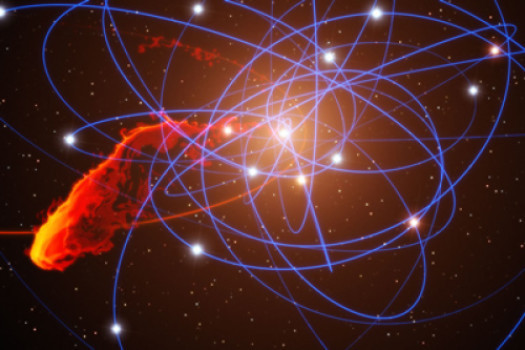Record flare from Milky Way's supermassive black hole 'caused by asteroid duo torn apart'

The largest-ever flare in X-rays from the Milky Way's supermassive black hole could be the result of asteroids being torn apart, or the result of a magnetic flare, according to a study presented at the American Astronomical Society.
Recorded by scientists led by Amherst College, the flare detected by Nasa's Chandra X-ray Observatory last September was a record flare, 400 times brighter than the usual X-ray output from the black hole Sgr A*.
The "megaflare" was nearly three times brighter than the previous record holder that was seen in early 2012.
It was followed by another enormous X-ray flare, 200 times brighter than Sgr A* in its quiet state on October 20, 2014.
In the case of a couple of asteroids that wandered too close, the gravity of the supermassive black hole Sagittarius A* (Sgr A* for short), would result in debris that would become very hot and produce X-rays before disappearing forever across the black hole's "event horizon".
The other theory is that the densely packed magnetic field lines in the materials flowing towards Sgr A* occasionally interconnect and reconfigure themselves. In the process their magnetic energy is converted into the energy of motion, heat and the acceleration of particles causing a bright X-ray flare.
The Sgr A* flares have a similar pattern of brightness to magnetic flares seen on the Sun.
The team was looking to see if Sgr A* would consume parts of a cloud of gas, known as G2 approaching it. The expected fireworks did not happen.
Astronomers estimate that the gas cloud made its closest approach — still about 15 billion miles away from the edge of the black hole — in spring 2014. The record breaking X-ray flares were produced about 100 times closer to the black hole, making it very unlikely that the Chandra flares were associated with G2.
© Copyright IBTimes 2025. All rights reserved.





















